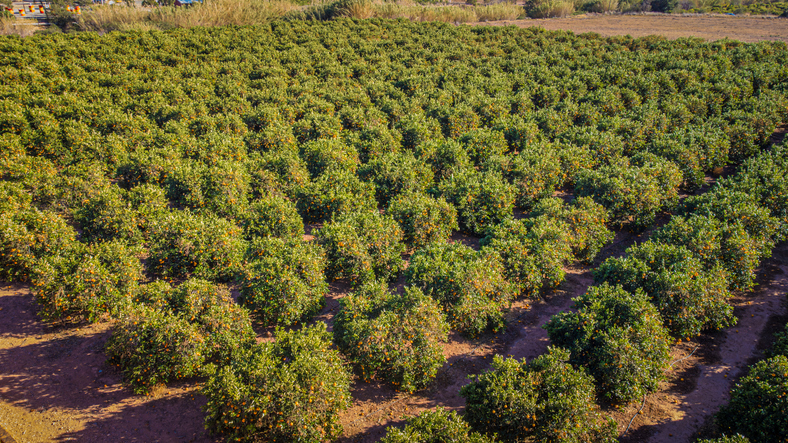Introduction
The agriculture industry has always faced a mix of challenges, but 2024 presents some particularly pressing issues that require innovative solutions. As highlighted in Top Challenges for Modern Agriculture in 2024, farmers are grappling with land degradation, unpredictable weather patterns, water scarcity, and labor shortages. These issues not only affect crop yield and quality but also have broader implications for global food security and sustainability.
In this blog, we’ll explore these challenges in greater depth, referencing insights from other reputable sources, before showing how AgriLynk’s advanced technology can provide effective solutions. This comprehensive approach aims to help farmers understand the context of these challenges while demonstrating actionable strategies to tackle them head-on. By addressing agriculture challenges in 2024, we can work towards a more sustainable and resilient agricultural future.
Overview of Agriculture Challenges in 2024
1. Soil Degradation
Soil degradation is one of the most significant issues facing farmers today. The FAO reports that over 33% of the world’s soils are already moderately to highly degraded, mainly due to erosion, compaction, and chemical contamination. This problem directly affects crop yield, reduces land fertility, and necessitates higher input costs for fertilizers and soil amendments.
Studies by the Soil Science Society of America emphasize that poor land management practices, including over-irrigation and chemical overuse, accelerate soil degradation. Furthermore, a 2023 report from the USDA noted that California, the country’s leading agricultural state, is particularly vulnerable to soil health decline due to intensive farming methods. Effective soil management is therefore critical not only for maintaining productivity but also for preventing further environmental damage.
2. Water Scarcity and Management
Water scarcity is a pressing global issue that has a direct impact on agriculture. According to the World Resources Institute, agriculture consumes around 70% of global freshwater resources. With growing urbanization, climate change, and droughts, competition for water is only increasing.
In California, farmers are already facing water rationing and stricter regulations on groundwater usage. This is forcing many to rethink their irrigation strategies. Efficient irrigation management is critical, especially in arid and semi-arid regions, to ensure that crops receive just the right amount of water, reducing waste and conserving valuable resources.
3. Climate Change and Unpredictable Weather
Climate change adds another layer of complexity to modern agriculture. The National Oceanic and Atmospheric Administration (NOAA) has reported increasing frequency and intensity of extreme weather events, such as heatwaves, floods, and unexpected frosts. These changes not only disrupt planting and harvesting schedules but also increase the risk of crop failure.
A survey conducted by the American Farm Bureau Federation in early 2024 revealed that over 80% of U.S. farmers have experienced adverse effects from changing weather patterns, with a significant impact on crop yields. As a result, farmers are seeking adaptive strategies, such as drought-resistant crops and improved water management systems.
4. Labor Shortages and Rising Costs
Labor shortages remain a persistent issue for U.S. agriculture, especially in labor-intensive sectors like fruit and vegetable production. According to the USDA, agricultural labor shortages are projected to continue as the workforce ages and fewer workers enter the sector. Compounded by rising labor costs, this creates a strong incentive for automation and mechanization on farms.
Automation is becoming a critical part of farm operations to fill the labor gap. Technologies such as autonomous tractors, robotic harvesters, and precision irrigation systems are being adopted to increase efficiency and reduce reliance on manual labor.
How AgriLynk Provides Solutions to Agriculture Challenges in 2024
AgriLynk offers a suite of advanced technologies designed to tackle these modern agricultural challenges head-on. By leveraging wireless communications, real-time data, and remote monitoring, AgriLynk empowers farmers to make more informed, data-driven decisions that enhance productivity and sustainability.
1. Addressing Soil Degradation with Smart Irrigation
One of AgriLynk’s standout features is its smart irrigation management system. By using wireless soil moisture sensors, AgriLynk provides real-time data that helps farmers deliver precise irrigation based on soil needs. This approach not only optimizes water usage but also prevents over-irrigation, a leading cause of soil erosion. By monitoring moisture levels continuously, AgriLynk ensures that water is applied at the right time and in the right amounts, supporting soil health and crop productivity.
Furthermore, AgriLynk’s platform integrates with standard soil sensors, enabling farmers to assess other factors like nutrient levels and salinity. This holistic data approach supports regenerative agriculture practices, which focus on improving soil health over time—an essential strategy for combating soil degradation.
2. Improving Water Management and Conservation
Water conservation is a critical feature of AgriLynk’s platform. The system’s real-time water usage tracking allows farmers to adjust irrigation schedules quickly in response to changing conditions, such as unexpected rain or temperature shifts. This adaptability helps reduce water waste, saving up to 30% of water compared to traditional irrigation methods, as estimated by AgriLynk’s pilot program data.
AgriLynk also offers an automated irrigation control option, which can be triggered by soil moisture sensors, scheduled, or even operated remotely via a smartphone. This functionality aligns with state water regulations in places like California, helping farmers maintain compliance while optimizing crop water needs.
3. Building Resilience Against Climate Change
AgriLynk’s data-driven approach helps farmers adapt to the challenges posed by climate change. By providing real-time weather forecasts and linking them to irrigation controls, the platform allows farmers to make proactive adjustments to irrigation and fertilization schedules. This can prevent damage from sudden frosts, heatwaves, or storms, thus reducing crop loss and improving resilience.
Additionally, the platform’s solar-powered, battery-backed field stations ensure that monitoring and control capabilities are not affected by power outages, which are becoming more common due to extreme weather events. AgriLynk’s technology not only provides reliability but also aligns with sustainable energy use, reducing the farm’s carbon footprint.
4. Automating Tasks to Address Labor Shortages
Labor shortages demand smarter, more automated solutions, and AgriLynk delivers exactly that. The platform allows farmers to control irrigation systems and other equipment remotely, significantly reducing the need for on-site labor. For example, AgriLynk’s remote valve control can be operated manually or set on a schedule, eliminating the need for field operators to manually adjust valves—saving time and labor costs.
Moreover, the integration of AI-driven analytics into AgriLynk’s dashboard helps farmers identify trends, optimize field operations, and predict maintenance needs, further reducing reliance on human labor while increasing overall efficiency.
Conclusion: A Path Forward with AgriLynk
Addressing agriculture challenges in 2024 requires innovation, adaptability, and efficiency. With solutions tailored to modern farming needs, AgriLynk helps farmers mitigate the impacts of soil degradation, water scarcity, climate change, and labor shortages. By adopting AgriLynk’s advanced technologies, farmers can ensure more sustainable land management, maximize water use efficiency, and automate essential tasks to overcome workforce limitations.
AgriLynk is committed to supporting farmers through these difficult times by providing the tools necessary to thrive in an increasingly challenging agricultural landscape. Whether you are dealing with soil degradation, water management, climate unpredictability, or labor constraints, AgriLynk’s solutions enable smarter, more sustainable farming practices that protect yields, profits, and the environment.
For more information about AgriLynk and how it can help farms of all sizes address agriculture challenges in 2024 and beyond, contact us or call one of our friendly, Southern-California-based representatives at 760-723-1529.








